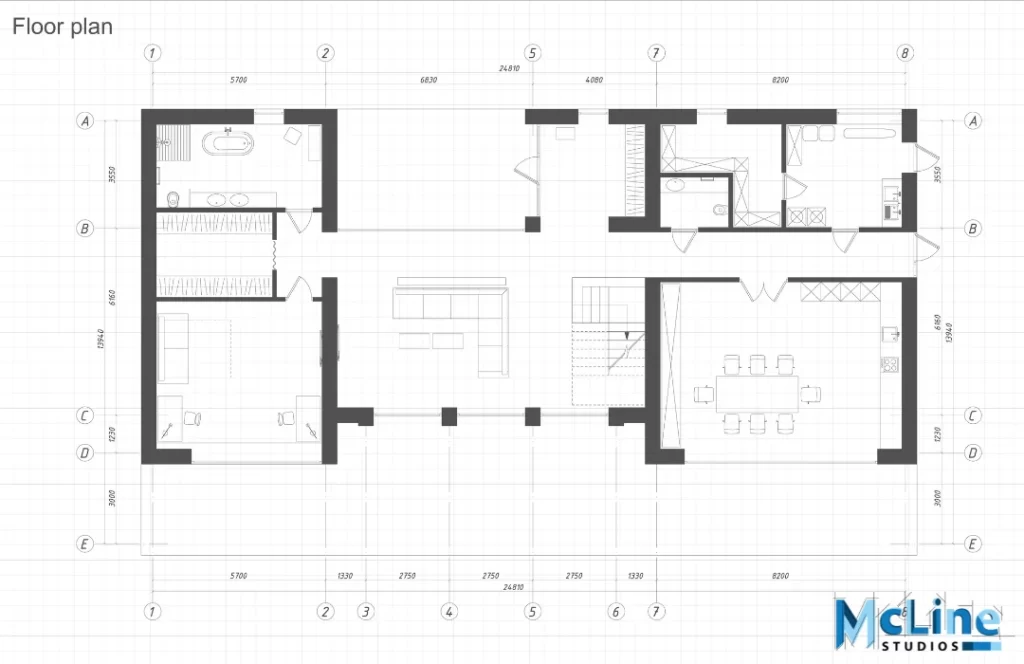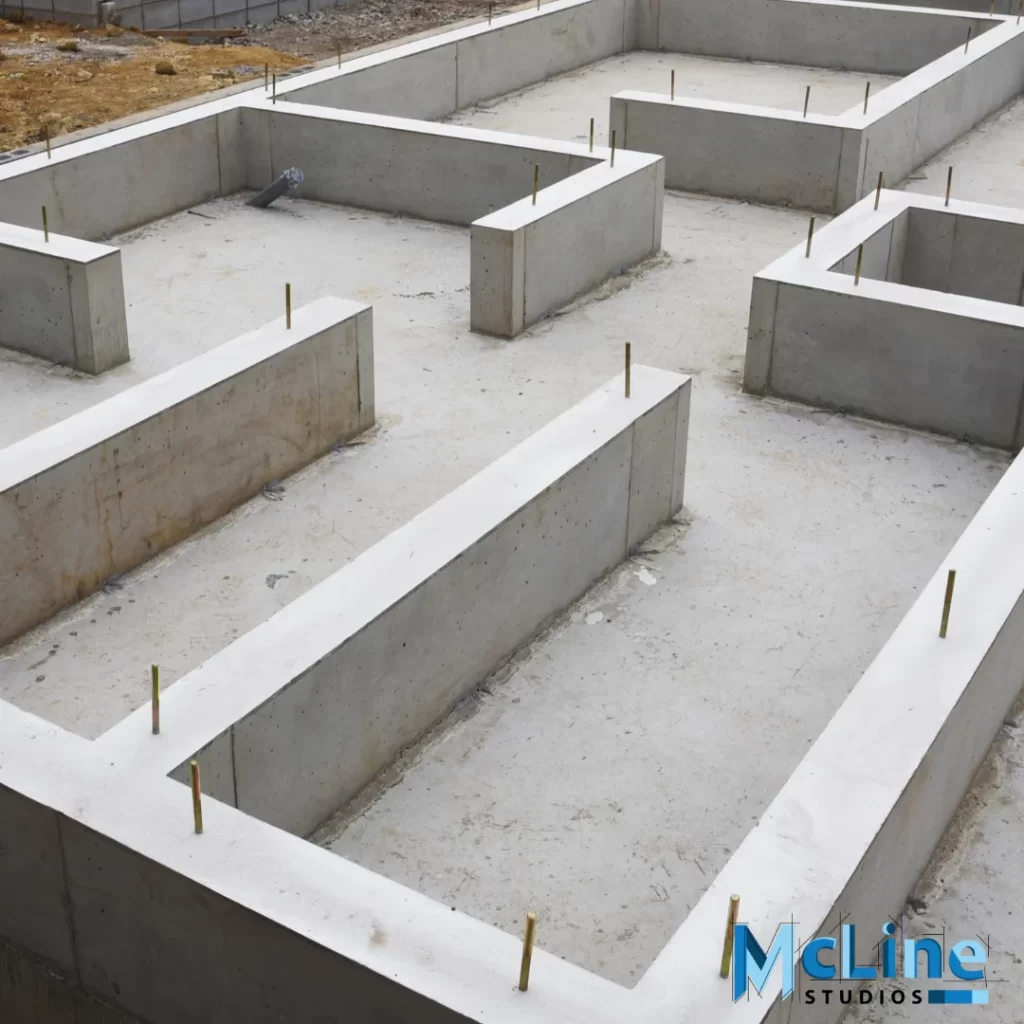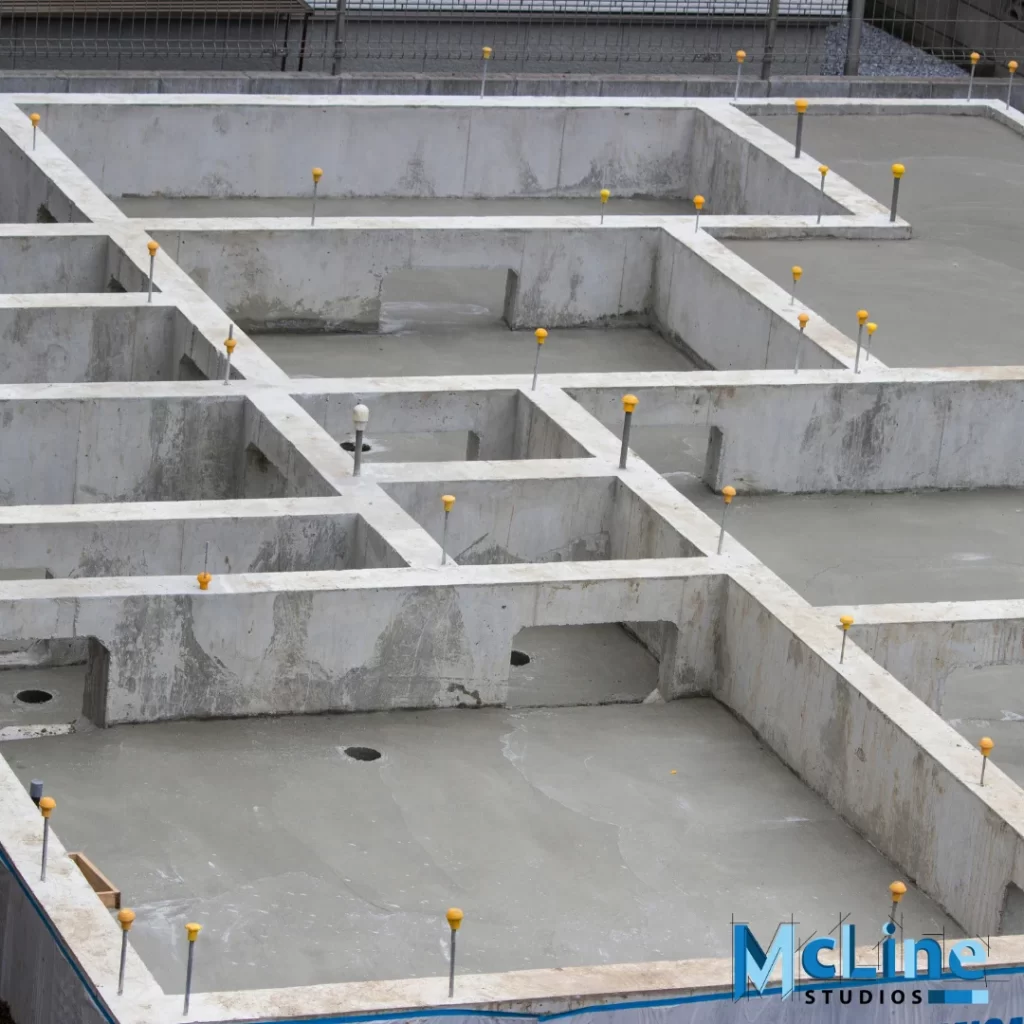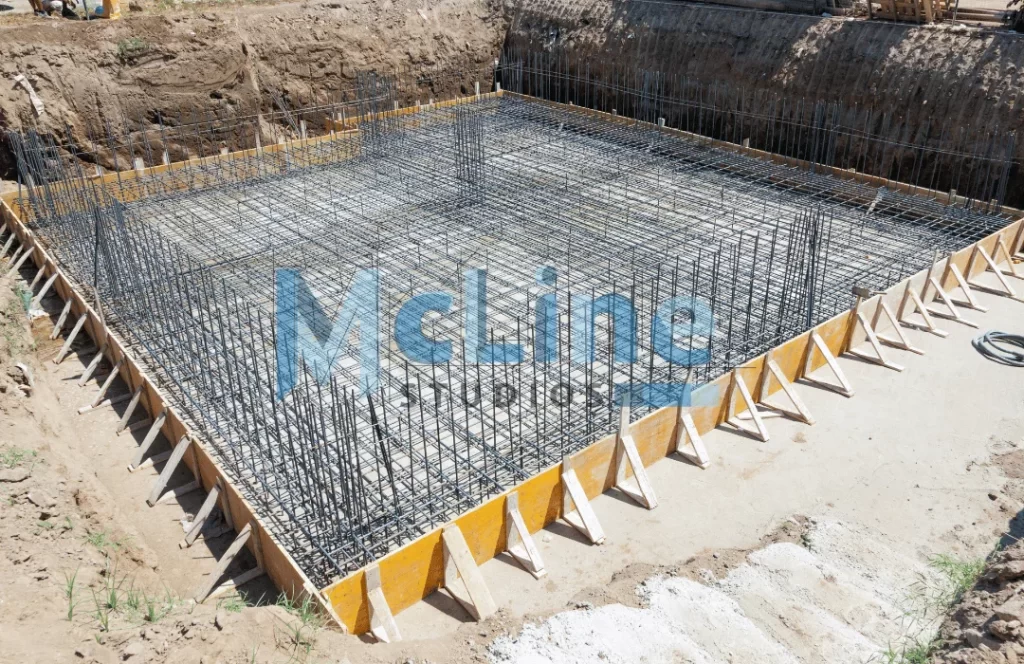Foundation plan drawings serve as the essential guide that transforms conceptual ideas into robust, enduring structures. These plans encompass vital information such as load-bearing specifications, dimensions, and material requirements, forming the blueprint for a robust foundation.
In this article, we will explore the essential components and principles that constitute an effective foundation plan. From footing details to reinforcement strategies, understanding the specifics of these drawings is integral to ensuring the stability and longevity of any construction project.

What are Foundation Plan Drawings?
Foundation plan drawings are a type of architectural drawing that provides detailed information about the design and layout of a building’s foundation. These drawings are a crucial part of the overall set of construction documents and are typically created by architects or structural engineers. Foundation plans serve as a guide for builders and contractors during the construction phase.
Components of Foundation Plan Drawings
1. Foundation Layout: Foundation plans show the outline and dimensions of the building’s foundation. This includes the location of all walls, columns, and other structural elements that support the load of the building.
2. Footings: The size, shape, and location of footings are specified on the foundation plan. Footings are the structural elements that distribute the weight of the building to the soil. The type of footing (e.g., spread footing, slab footing) will be indicated.
3. Foundation Walls: The thickness, height, and location of foundation walls are detailed on the drawing. These walls provide lateral support to the structure and may also serve as a barrier against moisture.
4. Columns and Piers: Foundation plans include information about any columns or piers that are part of the foundation system. These elements provide additional support to the structure.
5. Foundation Materials: The type of materials to be used in the foundation, such as concrete mix design and reinforcing details, may be specified on the foundation plan.
6. Sill and Floor Elevation: The elevation of the finished floor and the location of the sill (the bottom horizontal member of a window or door frame) are important for establishing the building’s height and ensuring proper alignment with other construction elements.
7. Drainage Details: Foundation plans may include details about drainage systems to manage water around the foundation, helping to prevent issues like water infiltration and damage.
8. Site Information: Relevant information about the site, such as contours, soil conditions, and any special considerations related to the foundation design, may be included.
Foundation plans are crucial for ensuring that the building is structurally sound and meets local building codes and regulations. They provide a detailed guide for excavation and construction crews, helping to ensure that the foundation is built according to the design specifications.
What are the Types of Foundations Plan?


Foundation plans are an essential part of the architectural and engineering design process for buildings. They provide the necessary support for the structure and distribute its load to the underlying soil or rock. There are three main types of foundation plans:
1. Shallow Foundations
– Spread Footings: These are the most common type of shallow foundation. They distribute the load from columns or walls over a wider area of soil. There are different types of spread footings, such as slab-on-grade, continuous, and isolated footings.
– Mat Foundations (Raft Foundations): Mat foundations are large, thick slabs that cover the entire footprint of a building. They distribute the building load over a larger area, reducing the pressure on the underlying soil.
2. Deep Foundations
– Pile Foundations: Piles are long, slender columns driven or drilled into the ground to support the structure. They transfer loads through weak or compressible soils to deeper, more stable layers.
– Drilled Piers (Caissons): These are deep, cylindrical holes filled with concrete. They provide support by transferring loads to stable soil or rock at depth.
3. Combined Foundation Systems
– Pile Raft Foundations: This combines aspects of both shallow and deep foundation systems. Piles are used to support a slab or mat foundation, distributing loads both vertically and laterally.
– Slab-on-Grade with Piers: In some cases, a building may have a combination of a slab-on-grade foundation along with piers (vertical columns) to provide additional support where needed.
Each type of foundation plan has its advantages and is selected based on factors such as soil conditions, building loads, local building codes, and project requirements. The choice of foundation type is a crucial decision in the design process to ensure the stability and safety of the structure.
How to Read and Interpret Foundation Plan Drawings
Reading and interpreting foundation plans is a crucial skill for architects, builders, and other professionals in the construction industry. Foundation plans provide detailed information about the design and layout of a building’s foundation. Here are some general steps to help you read and interpret foundation plans:
- Understand the Drawing Key: Start by reviewing the drawing key or legend. This section explains the symbols and abbreviations used on the plans. It’s essential to familiarize yourself with these symbols to accurately interpret the information presented.
- Identify Key Components: Locate and identify key components on the foundation plan, such as walls, columns, footings, piers, and other structural elements. Differentiate between load-bearing and non-load-bearing walls.
- Review Dimensions: Pay close attention to the dimensions indicated on the plan. This includes the width, length, and thickness of walls, footings, and other elements. Ensure that these dimensions comply with the structural requirements of the building code.
- Understand Materials and Construction Techniques: Foundation plans often specify the type of materials to be used, such as concrete mixtures, reinforcing steel, and waterproofing. Familiarize yourself with these details to ensure proper construction methods.
- Check Elevations: Look for elevation views on the foundation plans. Elevation views show the vertical dimension of the foundation, helping you understand the height of walls and other structural elements about each other and to the ground level.
- Inspect Footings: Examine the details of footings, which are the structures that support the foundation walls and distribute the load to the soil. Check the dimensions, reinforcement details, and any specific notes related to footings.
- Verify Drainage and Waterproofing: Foundation plans often include information about drainage and waterproofing systems. Ensure that you understand how water will be managed around the foundation to prevent issues such as water infiltration and damage.
The Bottom Line
In summary, foundation plan drawings are pivotal in the construction process, serving as a detailed roadmap for building structures. These drawings are essential for ensuring structural stability, compliance with building codes, and overall project efficiency.
In this context, McLine Studios emerges as a distinguished provider of architectural drafting services, excelling in the meticulous creation of foundation plans. With a dedicated commitment to precision, McLine Studios delivers high-quality documentation that meets industry standards.
As a foundational element in the overall construction documentation, these drawings contribute significantly to the success and safety of building projects, ultimately serving as a vital reference for construction professionals and regulatory authorities alike.




